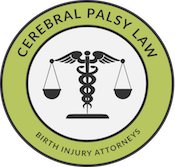Myth #1: All people with cerebral palsy have intellectual disabilities. Although cerebral palsy is a neurological condition, its defining feature is motor function impairment. In other words, people with cerebral palsy have damage to the parts of the brain that affect movement and posture. Most of the time, there is also damage to regions that affect intellectual function. It is important to note that while many people with cerebral palsy have difficulty speaking clearly, this may or may not be a sign of intellectual disability.
Myth #2: People with cerebral palsy can’t walk. There are many people with cerebral palsy who use wheelchairs, but the ways in which cerebral palsy affects different people is highly variable. Some people are only affected in one arm. Others may have difficulty with all of their limbs. Some can walk easily or with minimal impairment. Others need to use an electric wheelchair with a mouth-operated switch.
Myth #3: Cerebral palsy is primarily a genetic condition. Research indicates that cerebral palsy is mainly caused by damage to the brain during pregnancy, the birthing process, or the neonatal period. This damage typically occurs due to oxygen deprivation or traumatic force. In some cases, it is associated with medical malpractice. Read more about the causes of cerebral palsy here.
Myth #4: Cerebral palsy is a degenerative condition. Sometimes cerebral palsy gets confused with other neurological conditions that get worse over time, such as Parkinson’s and ALS (Lou Gehrig’s disease). However, brain damage from cerebral palsy does not spread and is not progressive. That is not to say individuals’ symptoms will remain the same throughout their lives – they may improve or worsen depending on the care they receive and the habits they practice.
Myth #5: Cerebral palsy is curable. While cerebral palsy isn’t degenerative, it isn’t curable either. Some studies on stem cell therapy have shown promising results, however. Additionally, there are many types of treatments, therapies, and surgeries that can alleviate symptoms of cerebral palsy. Early intervention is an especially important component of maximizing function. For example, a young child who has access to physical therapy and orthopedic surgery may be more likely to walk independently as an adult. (Read more about treatments and therapies here).
